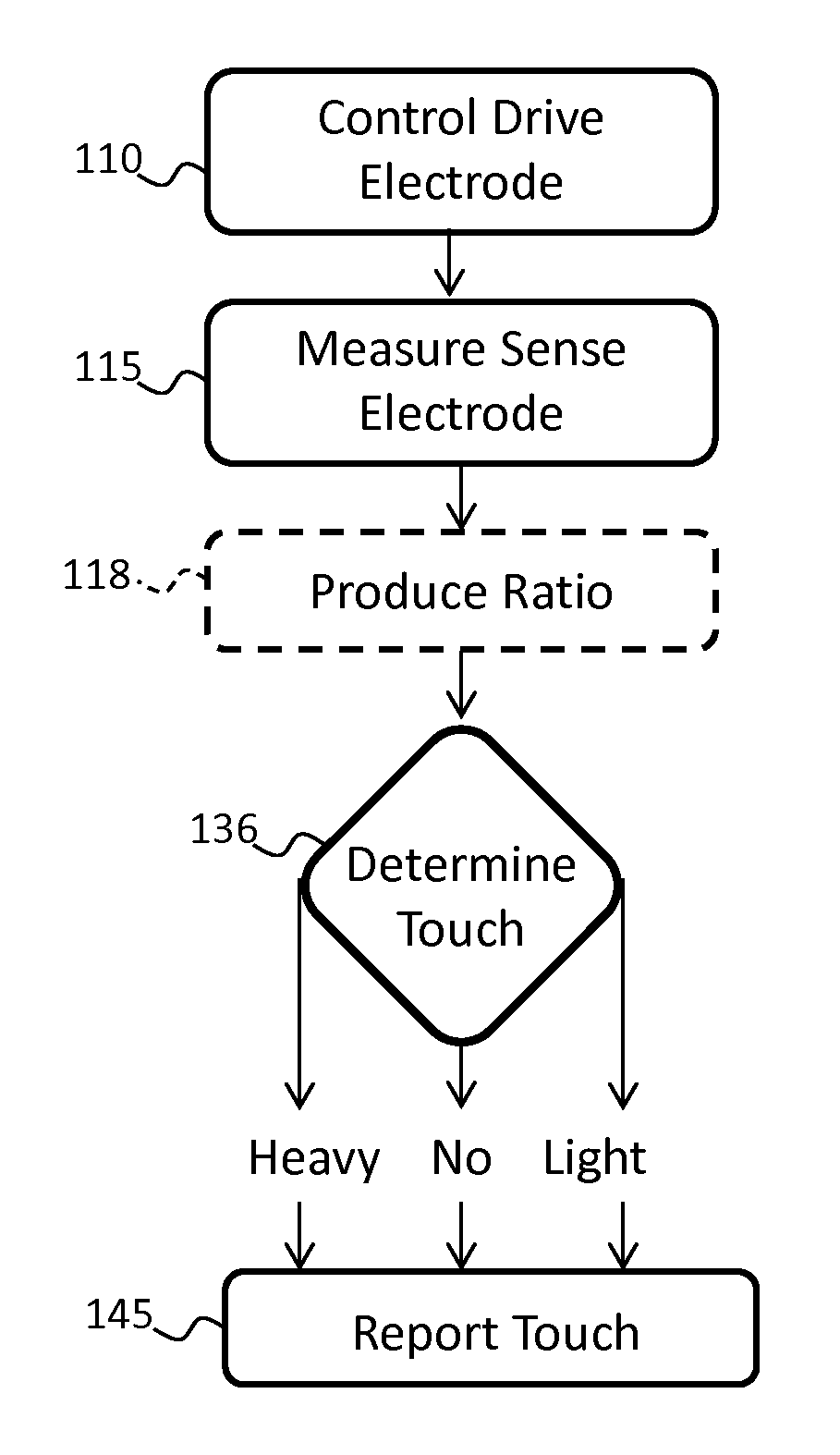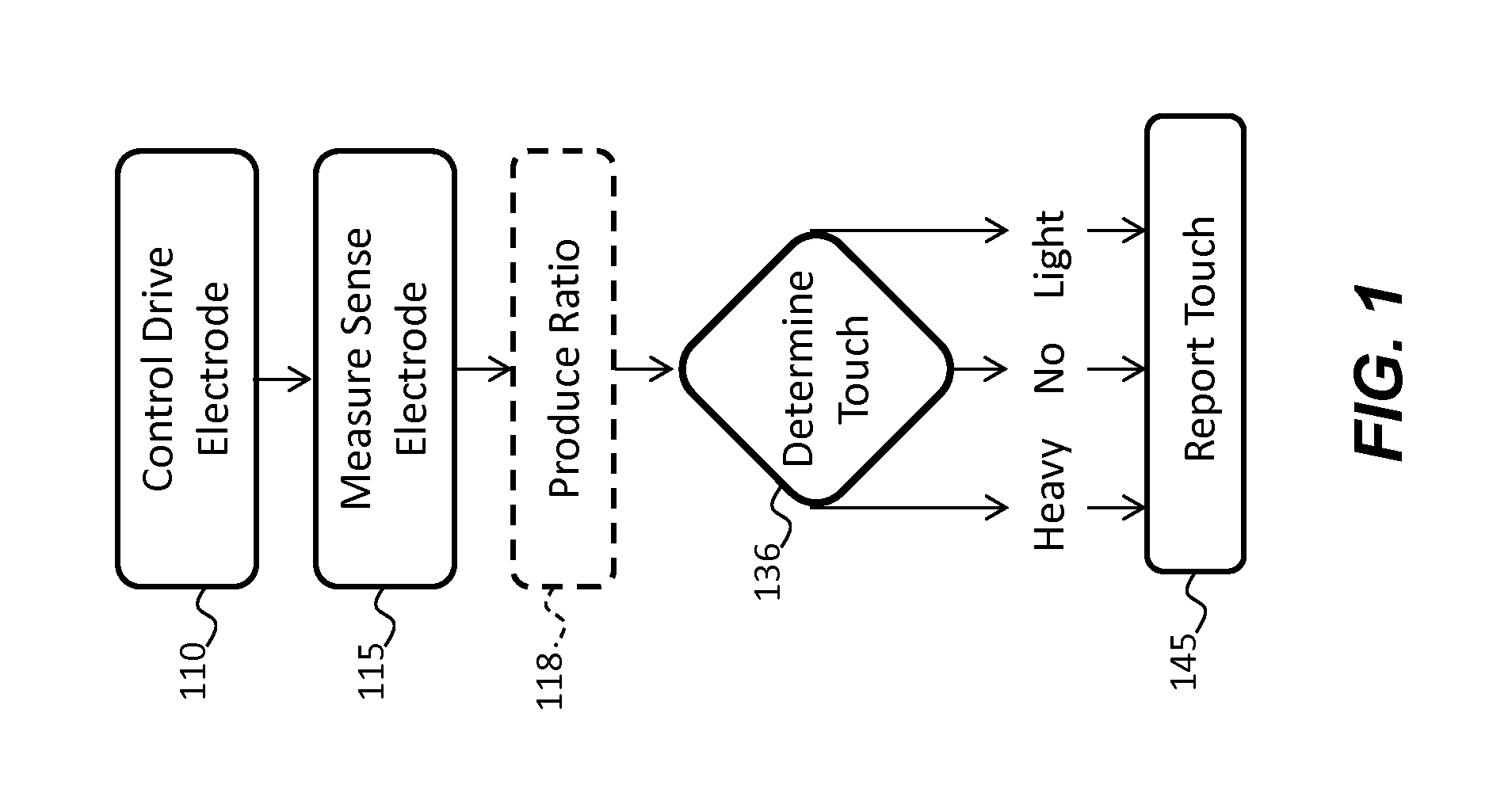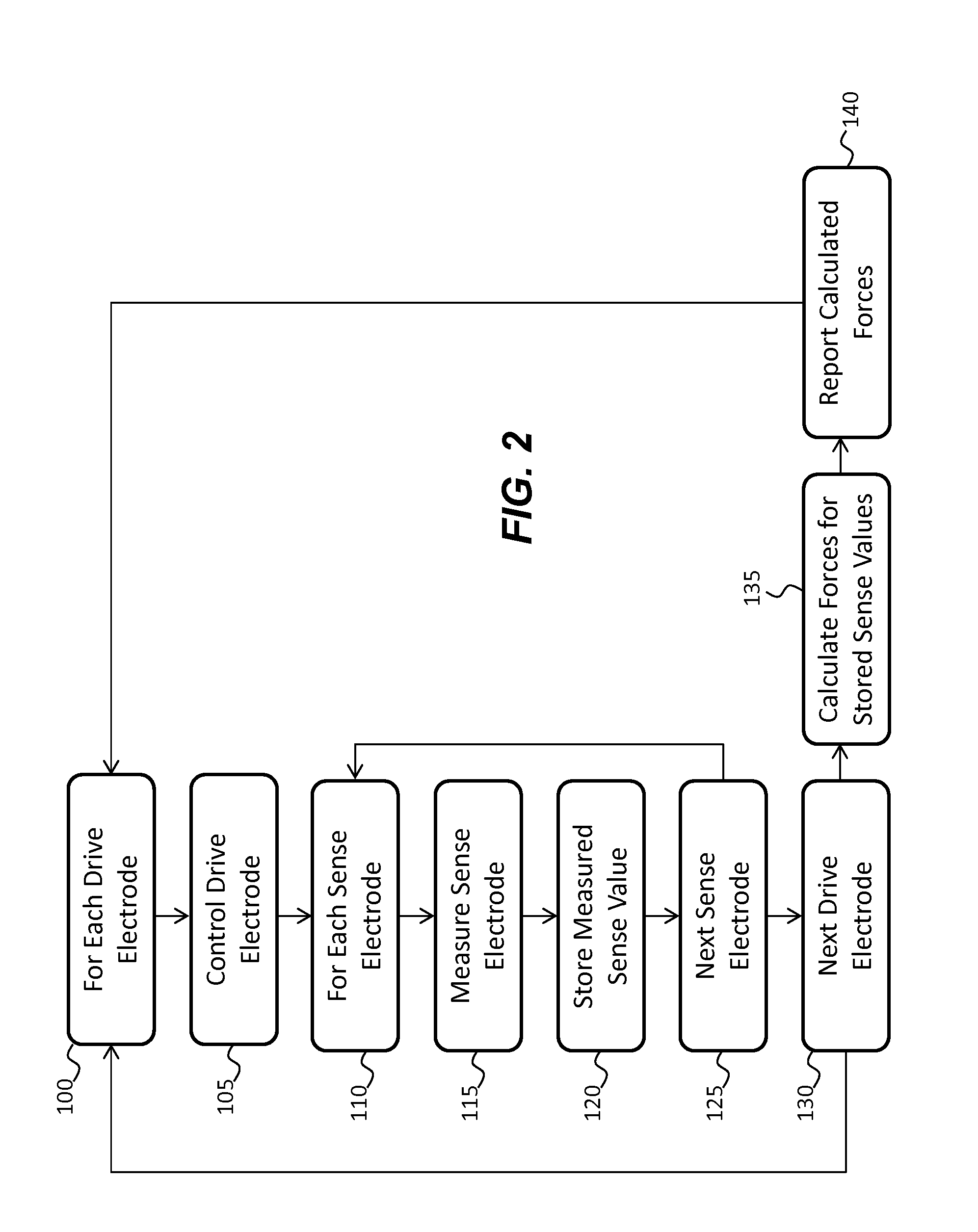Force detecting method for capacitive touch screen
a capacitive touch and force detection technology, applied in the field of capacitive touch screens, can solve the problems of increasing the thickness of the touch-sensing device, reducing transparency, etc., and achieve the effect of improving transparency and thickness
- Summary
- Abstract
- Description
- Claims
- Application Information
AI Technical Summary
Benefits of technology
Problems solved by technology
Method used
Image
Examples
Embodiment Construction
[0031]The present invention provides a device and method for sensing force applied to a capacitive touch screen with a deformable touch element. As shown in the prior-art illustration of FIG. 10, the capacitive touch screen device 5 is a touch screen that senses the presence of a touch element at the touch location 60 in the touch-detection area 70 defined by the extent of sense and drive electrodes 20, 30. Drive electrodes 30 extend across touch-detection area 70 in a drive-electrode direction 32 and sense electrodes 20 extend across the touch-detection area in a sense-electrode direction 22 direction different from drive-electrode direction 32 to define the extent of touch-detection area 70. Touch locations 60 are defined where sense electrodes 20 and drive electrodes 30 overlap. A deformable touch element is deformed in response to a force applied to the deformable touch element, for example mechanical pressure. According to embodiments of the present invention, the force with wh...
PUM
 Login to View More
Login to View More Abstract
Description
Claims
Application Information
 Login to View More
Login to View More - R&D
- Intellectual Property
- Life Sciences
- Materials
- Tech Scout
- Unparalleled Data Quality
- Higher Quality Content
- 60% Fewer Hallucinations
Browse by: Latest US Patents, China's latest patents, Technical Efficacy Thesaurus, Application Domain, Technology Topic, Popular Technical Reports.
© 2025 PatSnap. All rights reserved.Legal|Privacy policy|Modern Slavery Act Transparency Statement|Sitemap|About US| Contact US: help@patsnap.com



